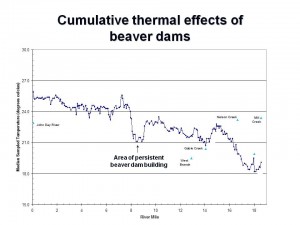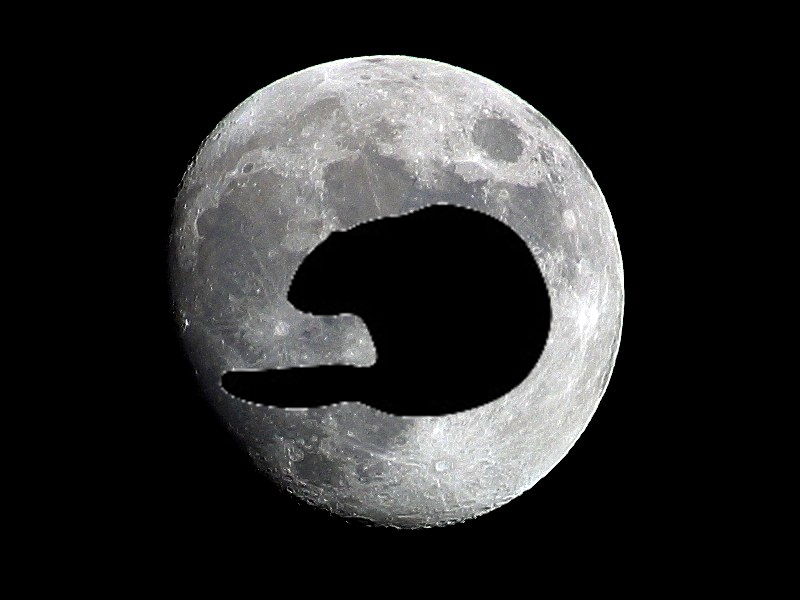I love waking up an hour later and not feeling guilty about it. Don’t you? There are lots of articles celebrating the upcoming beaver moon and the last lunar eclipse for 2 years but it won’t be visible here so I thought we’d focus on this fine article from Vermont instead, which is a state that has some really smart beaver folks too.
Nature Can Still Help Us, Despite the Errors of Humanity
For some time, I have been thinking that restocking beavers in the hills and mountains of Vermont would solve many problems with minimal cost. A network of little dams that store water at elevation, in small impoundments instead of big Army Corps of Engineers scale structures, has the potential to keep the ‘Ver’ in Vermont. Manifold small beaver dams would restore springs, help forests resist fires likely to result from climate change heat and drought, decrease erosion from aberrant climate-change-induced deluges and tropical storms, increase groundwater, improve forest production far in excess of the trees beavers use, and cool the temperature of brooks and rivers. Healthy trees, with ample water for transpiration in blistering heat, can cool much of the area around them.
Excellent opening argument Dan. I’m completely invested in what you are going to write next.
 While dithering about whether to suggest introducing beavers as self-regulating climate-moderating engineers, I encountered an article labeled “Beavers help climate change: Dams boost water storage and lower temperatures” while reading Science News (Sept. 10, 2022, p.8). People (and beavers) are doing it already!
While dithering about whether to suggest introducing beavers as self-regulating climate-moderating engineers, I encountered an article labeled “Beavers help climate change: Dams boost water storage and lower temperatures” while reading Science News (Sept. 10, 2022, p.8). People (and beavers) are doing it already!
Science News reports that a year after stocking beavers in the upper reaches of the Skykomish River in Washington State, “average water temperatures dropped by about 2° C” (3.6° F), “while nearby streams without beavers warmed by 0.8° C” (1.44° F), more than a 5° F difference. The beavers “raised water tables by as much as 30 centimeters” (almost a foot). The researchers estimated that the dams resulted in double the amount of water stored in the ground as was stored behind beaver dams after just one year.
That seems like a really good service. I mean isn’t there someting IN that water that wants it to stay cool?
 People who fish for trout, in particular, will appreciate lower water temperatures, which are vital to trout. Not mentioned in the article is that beaver dams smooth (dampen) stream flow fluctuations. Brooks and rivers are more likely to run year round with no or less severe flooding and little likelihood of drying. Think of the Winooski River if it never dries as it runs through Montpelier as it did this year. Dampening flooding from the anticipated increase of extreme ‘rain events’ by small high ponds would help reduce river flooding, maybe making it a rarity.
People who fish for trout, in particular, will appreciate lower water temperatures, which are vital to trout. Not mentioned in the article is that beaver dams smooth (dampen) stream flow fluctuations. Brooks and rivers are more likely to run year round with no or less severe flooding and little likelihood of drying. Think of the Winooski River if it never dries as it runs through Montpelier as it did this year. Dampening flooding from the anticipated increase of extreme ‘rain events’ by small high ponds would help reduce river flooding, maybe making it a rarity.
The increase in groundwater not only would help the forest resist fire, it would add to the water available to forests, springs, and any wells below the beaver ponds. In my latest commentary in The Bridge (Sept. 6, 2022), I discussed the likelihood that the Montpelier area, and much of northern New England, will be a magnet to climate chaos refugees. Improving the hydrology of the slopes around Montpelier would be an excellent way to prepare for the added human stress on our environment and at least partly counter the damage from a wilder and more dangerous climate.
Well sure, If you’re going to list all those good things beavers do you’re going to make it sound like we need them. But they flooded my cousins basement! They at my aunt’s hawthorn tree! We can’t just let a menace like that run loose!
Eons of erosion ideally shaped the region’s hills and mountains for small pond construction, by beavers or people, to store water in a way that stabilizes and enriches the environment in even more ways that I’ve mentioned. Small dams are minor adjustments to the landscape; they do not pose the wholesale failure risk of large dams. Being modular, with far more potential sites than anyone would propose utilizing, they can be developed carefully and gradually without huge appropriations. Therefore, I suggest some forms of economic incentives, perhaps a rotating fund for low-head hydroelectric where, as the generators pay off, repayment money is made available for ne w landowner projects. I suspect that the state fish and wildlife folks would enthusiastically stock beavers if that becomes seen as a public good.
w landowner projects. I suspect that the state fish and wildlife folks would enthusiastically stock beavers if that becomes seen as a public good.
All the residents of the area, from songbirds to fish, moose to rabbits, Republicans to Democrats, would benefit from efforts to restore the health of the environment by managing the water as nature arranged before we got here. If we make the right moves, deliberately and incrementally, we can accommodate our forests, our streams and rivers, our wildlife, and an enlarged human population. If we wing it, we will likely make a mess of the change that population numbers and the waste of consumerism bring down on us.
Well said, Dan.
Beavers can help us navigate the armageddon we have brought down on ourselves. I think that’s worth having a moon named after them. Don’t you?







































